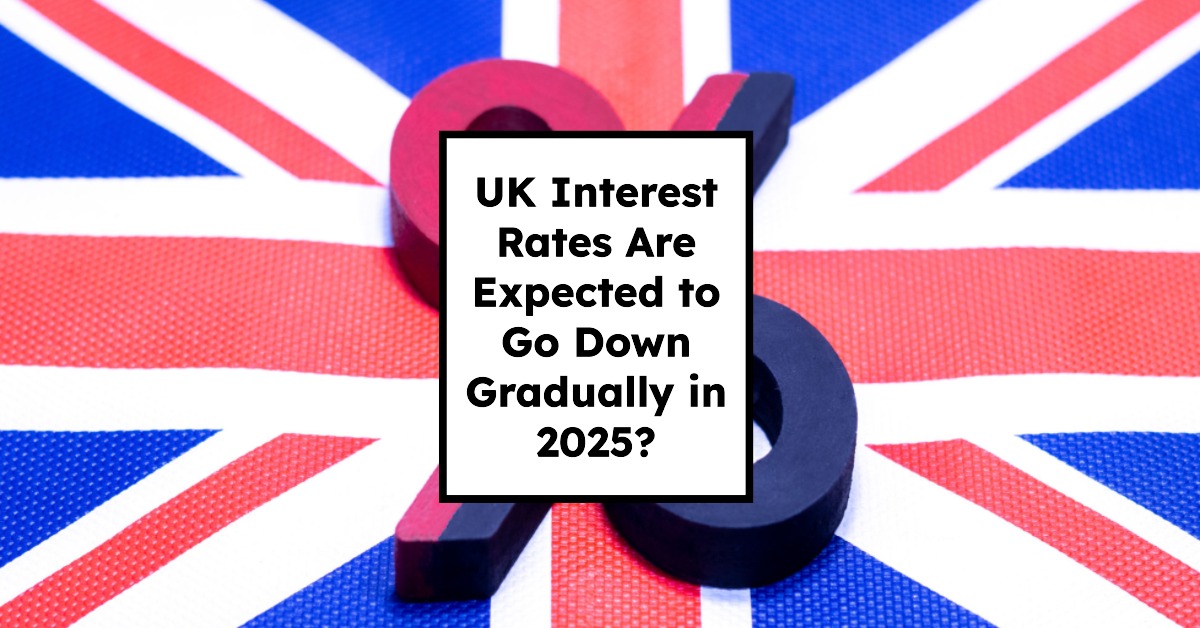If you're wondering whether interest rates in the UK will go down gradually, the short answer is: yes, that's the expectation. The Bank of England has signaled a cautious approach to lowering rates, likely starting around May 2025. With the current Bank Rate at 4.5%, the aim is to reach around 4% by early 2028. This slow and steady strategy is influenced by factors like inflation and global economic uncertainties.
But what exactly does “gradually” mean? And what are the real-world implications for you, your business, and the overall UK economy? Let's dive into the details.
UK Interest Rates Are Expected to Go Down Gradually in 2025?
Why Is Everyone Talking About Interest Rates?
Interest rates might seem like a dry, economic topic, but they impact almost every part of our lives. They influence:
- Mortgages: The cost of borrowing to buy a home.
- Loans: The affordability of car loans, personal loans, and business loans.
- Savings: The returns you get on your savings accounts.
- Business Investment: Whether companies choose to expand or hold back.
- Inflation: The overall price of goods and services.
Simply put, when interest rates are low, borrowing is cheaper, encouraging spending and investment. When rates are high, borrowing becomes more expensive, which can cool down the economy and keep inflation in check.
The Bank of England's Balancing Act
The Bank of England (BoE) is responsible for setting the UK's Bank Rate (also known as the base rate). They use this powerful tool to manage inflation and support economic growth. It's a constant balancing act.
Think of it like driving a car. If the economy is speeding ahead too fast (leading to high inflation), the BoE puts on the brakes by raising interest rates. If the economy is slowing down too much, they hit the gas by lowering rates.
Recent Interest Rate Decisions: A Timeline
Here’s a quick recap of recent moves by the Bank of England:
- August 2024: Bank Rate reduced from 5.25% to 5%
- November 2024: Rate cut to 4.75%
- February 5, 2025: Rate lowered to 4.5%
- March 20, 2025: Monetary Policy Committee (MPC) votes to hold steady at 4.5%
That last decision on March 20th is particularly interesting. The MPC voted 8-1 to keep rates unchanged, showing that they’re being extra cautious. While a rate cut may be on the horizon, this decision showed they're still unsure about the ideal timing and magnitude of further cuts.
Why Gradual Cuts? A Deep Dive into the Reasons
The Bank of England isn’t rushing into aggressive rate cuts, and there are several good reasons why:
- Inflation Still Above Target: While inflation has come down significantly from its peak of 11.1% in October 2022, it’s still above the 2% target, sitting at 3% right now. Projections suggest it could even rise to 3.7% by mid-2025 before falling back. The BoE wants to make sure inflation is firmly under control before making any big moves.
- Economic Growth Remains Moderate: The UK economy is expected to grow by 0.75% in 2025, a downward revision from the earlier forecast of 1.5%. This reflects the challenges of rising costs, high interest rates, and a difficult global economic climate. A very slow and careful approach is required here.
- Global Uncertainties: The global economic picture is far from clear. Trade tensions, like those surrounding potential US tariffs, can impact UK exporters and add to economic instability.
- Domestic Supply Constraints: Issues like labor shortages and supply chain disruptions continue to put upward pressure on prices, making the Bank of England even more cautious.
As Governor Andrew Bailey recently stated, interest rates are expected to be “on a gradually declining path.”
What Does the Future Hold? Projecting Interest Rates
The Bank of England's February 2025 Monetary Policy Report provides some clues about where interest rates might be headed:
| Quarter | Bank Rate (%) |
|---|---|
| 2025 Q1 | 4.6 |
| 2026 Q1 | 4.2 |
| 2027 Q1 | 4.1 |
| 2028 Q1 | 4.0 |
These figures are based on market expectations and the Bank's own assumptions. It's important to remember that these are just projections. Actual interest rates could be higher or lower depending on how the economy evolves.
The Wildcard: The Long-Run Equilibrium Interest Rate
One particularly interesting detail from the Monetary Policy Report is the discussion of the long-run equilibrium interest rate (often called R*). This is the theoretical interest rate that would keep the economy at full employment and stable inflation in the long run.
The report suggests that R may have increased* modestly since 2018, potentially by 25-75 basis points (0.25% to 0.75%). This is significant because it means that interest rates may not fall as low as they were before the pandemic. In other words, even in the long run, we may be living in a world with slightly higher interest rates than we're used to.
What Does All This Mean for You? The Impact on the UK Economy
The expected gradual decline in interest rates has several key implications for the UK economy:
- Inflation Management: The measured approach is intended to bring inflation back to its 2% target without causing economic instability.
- Economic Growth: Lower interest rates should stimulate borrowing and investment, supporting economic growth. But the BoE doesn’t want to overheat the economy, so they will be proceeding carefully.
- Financial Market Stability: A predictable path for interest rates helps businesses and investors plan for the future.
- Consumer and Business Behavior: Gradual cuts will allow consumers and businesses to adjust their spending and investment decisions smoothly.
- Global Trade Considerations: The Bank of England is keeping a close eye on global trade issues, like potential tariffs, and will be ready to respond if needed.
Who Wins and Who Loses? The Personal Impact of Interest Rate Cuts
The gradual decline in interest rates will affect different people in different ways:
- Homeowners with Variable-Rate Mortgages: If you have a tracker mortgage, your payments will likely decrease as interest rates fall. This will free up some cash in your budget.
- Homeowners with Fixed-Rate Mortgages: If you're locked into a fixed-rate deal, you won't see any immediate changes. However, when your current deal ends, you'll likely be able to refinance at a lower rate.
- Savers: Lower interest rates mean lower returns on savings accounts. This is bad news for savers, especially those relying on interest income.
- Businesses: Lower borrowing costs can encourage businesses to invest and expand, creating jobs and boosting the economy. However, this could also mean that businesses reduce the savings they put into their bank accounts.
- First-Time Home Buyers: Cheaper mortgages could make it easier to get on the property ladder. However, this could also push up house prices, making it more difficult to save for a deposit.
My Two Cents: Patience Is Key
In my opinion, the Bank of England is taking the right approach by moving slowly and cautiously. Rushing into aggressive rate cuts could risk reigniting inflation, which would ultimately be more painful for everyone.
Of course, this gradual approach isn't without its challenges. Savers will continue to struggle with low returns, and businesses may be hesitant to invest until they see more certainty. But overall, a measured and predictable approach is more likely to lead to long-term stability.
The economy is like a complex puzzle with a lot of moving pieces, and right now it's difficult to predict how the picture will look by the end of the year, but it's going to be an interesting year for the UK economy. I’ll be keeping a close eye on these developments and will keep you informed as things change.
Recommended Read:
- UK Interest Rate Forecast for the Next 5 Years
- IMF Predicts High Interest Rates for the Long-Term in the US and UK
- UK House Prices Hit Record Highs: Will They Keep Climbing?
- UK Housing Market Predictions 2024: Crash or Correction?
- Interest Rate Predictions for the Next 3 Years: (2024-2026)
- Interest Rate Predictions for Next 2 Years: Expert Forecast
- Interest Rate Predictions for Next 10 Years: Long-Term Outlook




